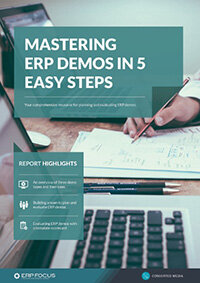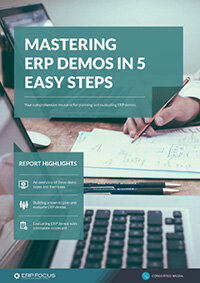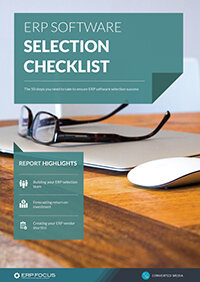How to Create an ERP Vendor Shortlist
Step One: Write an Informal List
The first step is to formally write down an intuitive shortlist of ERP vendors based solely on personal knowledge – your own or that of people you trust. Most vendors are still in business because they have a good product for a certain market niche; it is when they try to grow beyond their comfort zone – apply their ERP solution to an unfamiliar industry for example, or move from serving mid-size companies to a Fortune 500 size company – that risk increases dramatically. You don’t need to do anything with your informal list, other than check it from time to time, and see that the shortlist you create passes a “common-sense” test.
Step Two: Decide Your Company’s “Constituencies"
Next, identify the constituencies within your company who will have input into the shortlist. Typically, there are three to five: (1) business people who need a better system to serve strategic business objectives; (2) IT people who want a solid support and development platform; (3) financial people who want strong controls and a clear audit trail; (4) purchasing people who want the lowest possible cost of ownership; and (5) the C-level offices and executive committees who want to ensure that the project is well managed. It is the responsibility of the ERP project manager and implementation team to make sure these constituencies are appropriately balanced.
Step Three: Draft an Objective Scoring Doc
The third step is to create an objective scoring document. Put thought into this document, and do not hesitate to re-do it if it does not yield common-sense results. There are two purposes for this document: first to make certain you can articulate the high-level product requirements, and second, to make sure discussions with vendors have some basis in objectivity. If you cannot move the constituencies out of the realm of predetermined opinion, you are in a difficult position. An objective document might be to list ten to twenty product features, give each feature a relative weighting, and then ask each constituency to score the feature’s perceived performance. The weighting will give the finance people time to argue – before vendor presentations start – that finance should be weighted as 50% of the scoring solution (instead of the 10% originally recommended). Scoring all features will help people understand that not all ERP solutions are good at everything. Features may also include intangibles: is the product scalable? Will the vendor around ten years from now?
Don't Miss This Free Download: "Mastering ERP demos"
Step Four: Meet with Vendors
You are now ready to start vendor presentations and working the documents. Do not be surprised if you find there are really only two or three key items that differentiate most ERP vendors. If that occurs, run it through your common sense filter. If it passes, accept it as a valid data point.
Lastly, do not be penny wise and pound-foolish. You will be married to this ERP solution for a long time, and the cheapest thing about it will be the purchase price. You cannot be irresponsible, but neither should you ever let a vendor with an inferior product make the shortlist with a low selling price. Good luck.
Free white paper

ERP Demo Guide & Scorecard
Master your ERP demo with 5 easy steps using our free guide (includes demo scorecard)

Featured white papers
-

ERP Software Pricing Guide
Get the latest pricing information on over 80 popular ERP systems, and learn how to budget for your ERP project in our free guide
Download -

60-Step ERP Selection Checklist
Get the comprehensive checklist for your ERP selection project
Download -

ERP Demo Guide & Scorecard
Master your ERP demo with 5 easy steps using our free guide (includes demo scorecard)
Download
Related articles
-

The best ERP systems for process manufacturing
Consider these ERP systems when selecting your next process manufacturing ERP
-

CMMC Compliance: What Aerospace and Defense Manufacturers Need to Know
Key insights on CMMC compliance, deadlines, and securing DoD contracts with CMMC 2.0 certificatio...
-

A complete ERP RFP template & guide (includes free template)
All you need to know construct a foolproof ERP RFP, including a customizable template

